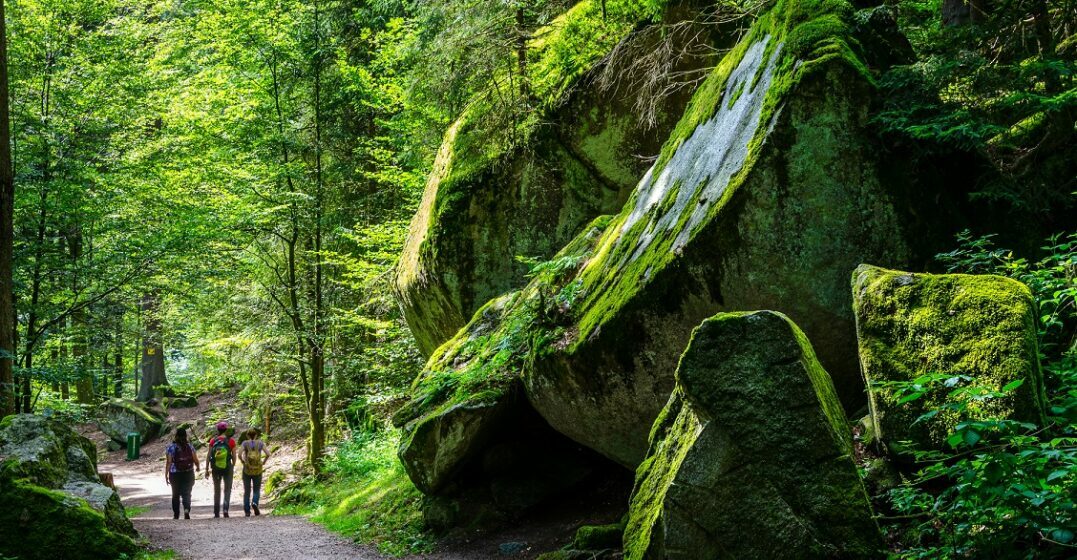by Anne Walther
Updated on January 8, 2024
In addition to its well-known cities and festivals, Germany also offers tourists many rural and natural areas to visit. For example, many Germans will spend their summer vacations not only visiting the beach, but also one of the many German forests — spending their days at local lakes or hiking. German forests are home to many native European tree species, such as beeches and oaks and spruces, with some German national parks even hosting primeval forests. However, with almost a third of the country covered by trees, you may have a hard time choosing the right forest to visit. We’ll give you some info on a few of the most interesting ones below!
Right at the border of the Czech Republic in Bavaria, you will find the national park Bayerischer Wald. Not only is this the oldest national park in Germany, but it also is home to the largest protected forest area in Germany, together with the neighboring park Šumava. Over a stretch of mountains, you will even find primeval forest areas and wetlands.
Although the region was deforested up until the late 19th Century to produce charcoal, the Eifel was planted with spruce trees by the Prussians. Reforestation efforts were increased post-war and the Western German region now hosts a diverse landscape of not only the forest but also grassland and rivers.
Right in the middle of Germany, you will find the Hainich national park with a UNESCO World Heritage Site protecting and honoring the Primeval Beech Forests of the Carpathians. The park was created to allow the local beech trees to form a primeval forest ecosystem again. A local attraction is the 310-meter-long canopy walkway, allowing visitors to experience the forest from above the ground.
Home to the famous Hexentanzplatz (witches’ dance floor) and the highest mountain in Northern Germany, it is no surprise that the Harz forest is the location of many German myths and legends. For example, you will even find a unicorn cave close by! The forest also hosts a wide range of wild German animals like Lynx and raccoon dogs.
On the mountains of the Western German Hunsrück range, you can visit the forest of the national park Hunsrück-Hochwald. The forest is known for its ecological diversity, particularly when it comes to birds and insects.
Wrapped around lake Edersee and covering more than 50 separate hills, the forestry national park Kellerwald-Edersee is home to many native European species including endangered plants and fungi such as the clove pink flower. In addition, there is an impressive fauna to be found, including 15 out of 24 German species of bats as well as woodpeckers and 822 species of butterflies (page in German) – needless to say, the forest is an oasis for those who want to explore German nature.
Although the black forest, or Schwarzwald, is one of the most famous forests in Germany and is considered one of the most beautiful forests in Europe, it may surprise you that it has only been a protected area since 2004. The region in the South is a popular tourist destination, with activities such as skiing and mountain biking being available for visitors. As of 2017, part of the forest is also recognized as a UNESCO biosphere reserve.
Although German cities are always worth a visit, German nature and national parks offer a unique insight into the diversity of middle-European forests in addition to many holiday activities. It is no surprise that more than half of all tourists in Germany are actually Germans themselves, visiting other regions of their home country. No matter if you want to go mountain biking, are a winter sports enthusiast or just want to spend a relaxing holiday at the lake – Germany can offer it all!
